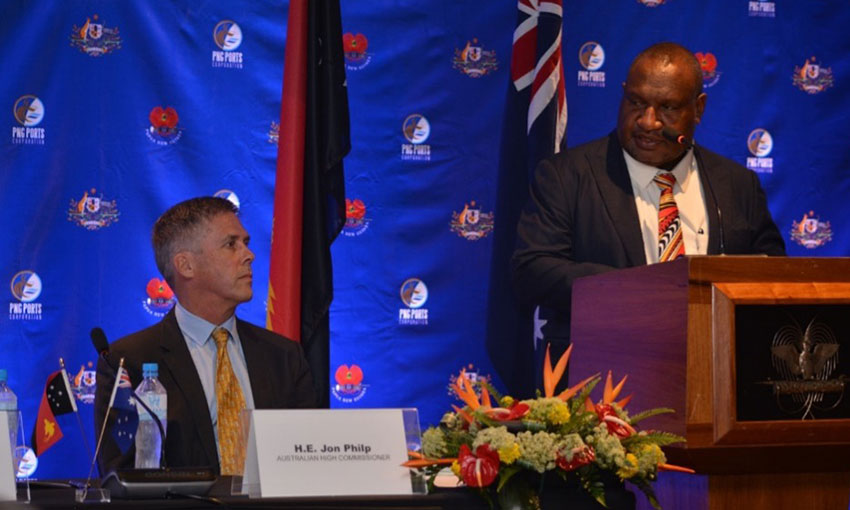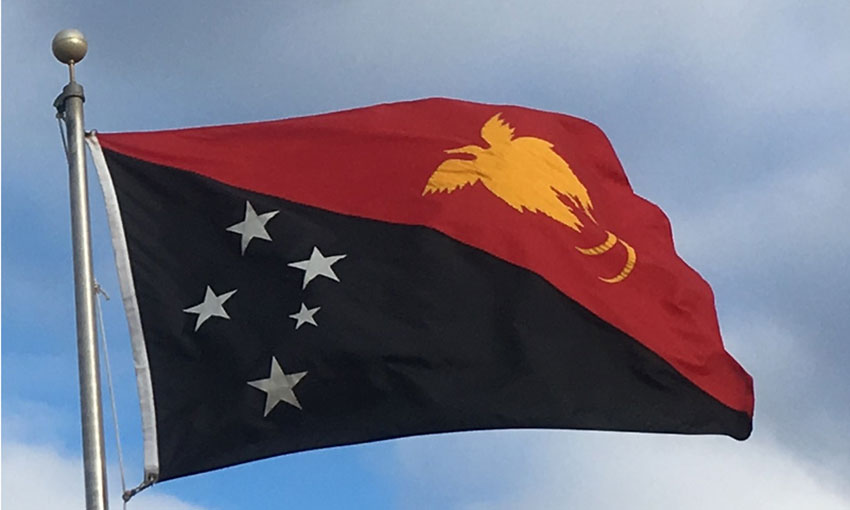THE governments of Papua New Guinea and Australia signed a memorandum of understanding last week, agreeing a framework for co-operation to support investment preparation activities in PNG’s maritime infrastructure sector.
The co-operation is to be through the Australian Infrastructure Financing Facility for the Pacific, the PNG government and PNG Ports Corporation.
These activities are expected to result in a program of potential investments, estimated at PGK 1.1 billion.
The MOU was signed by the Australian High Commissioner to PNG Jon Philip, the PNG minister for state enterprises William Duma and PNG Ports chairman Kepas Wali. PNG Prime Minister James Marape attended the signing ceremony.
The recent completion of PNG Ports’ 30 Year Infrastructure Master Plan provides opportunities to strengthen the co-operation between Australia and PNG in the sector.
Mr Marape said Australia is responding to Papua New Guinea’s request to support the renewal and upgrade of critical ports.
“Australia and Papua New Guinea share a strong and enduring bilateral partnership, and today’s agreement will further strengthen our cooperation set out in our Comprehensive Strategic and Economic Partnership,” Mr Marape said.
Mr Philp acknowledged that the agreement is part of a growing engagement by Australia to support infrastructure in PNG.
“The 30 Year Ports Infrastructure Master Plan provides an excellent opportunity and platform through which Australia can help support infrastructure development aspirations of PNG,” he said.

Mr Duma thanked Australia for having the confidence and trust in the government of PNG through the undertaking. He acknowledged the Australian government’s focus on local jobs and local business participation in any investments they finance.
“I am humbled by this gesture from the Australian government,” Mr Duma said.
“PNG Ports is one of the oldest SOEs [state-owned enterprises] in the country, and our history is as old as PNG.”
Mr Duma said the foundations of most of the country’s ports were built during the colonial and Pacific War era by the Australians.
“It is appropriate that we now come together to jointly collaborate to plan for the rehabilitation of critical infrastructure,” he said.
“PNG Ports will continue to work in close consultation with Australia to ensure that we can work towards developing a proposal that will stand the test of time, as well as maximize benefits for the local community through jobs and community engagement.”
Ports Australia CEO Mike Gallacher said the investment in the relationship between Australia and PNG is an exciting development for Ports Australia’s vision towards a co-operative South Pacific maritime sector.
“It’s encouraging the Australian government is stepping up to the plate … as Ports Australia has expressed for years now, industry and government both have vital roles to play in achieving more synergistic ties across the region, and we can only encourage government to extend such consideration to other South Pacific maritime partners,” Mr Gallacher said.
“Investment like this opens up an array of mutual advantages for Australia and its South Pacific partners such as stronger lines of communication for knowledge sharing and problem solving, which will prove invaluable for projects like our International Associate Member PNG Ports’ 30 Year Master Plan.”
Mr Wali of PNG Ports acknowledged the commitment and support of the board and management of PNG Ports in ensuring that any works, should they be financed by Australia, will be undertaken in a transparent and high-quality manner.

